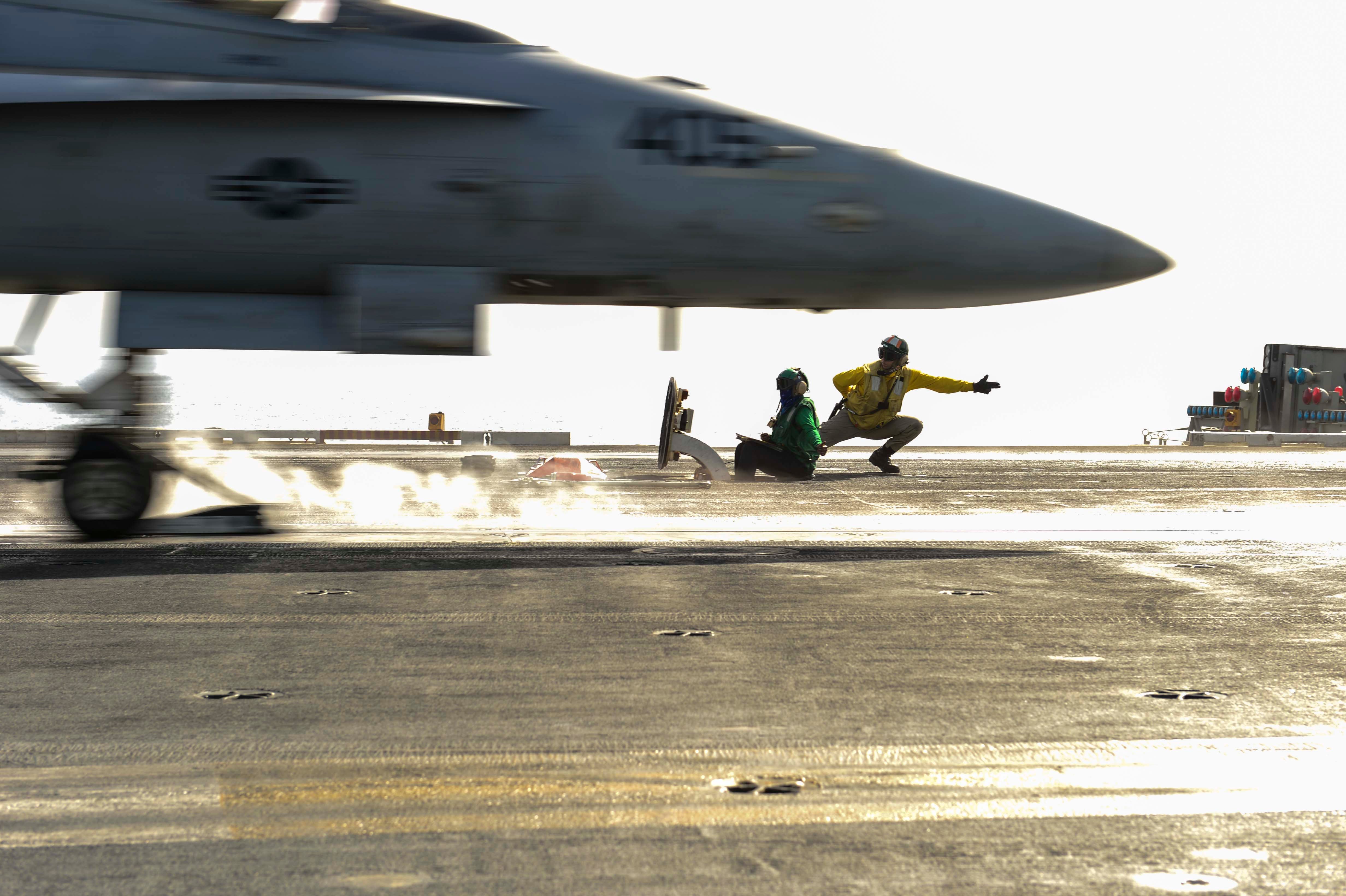For 20 years, Leslie Shook’s has kept F/A-18 pilots alive as the voice of the plane’s audio warning system, which pilots have affectionately nicknamed "Bitchin’ Betty."
Shook, who recently retired from Boeing after working there for 35 years, said she is tickled that her voice is known to both pilots and aircrews as "Bitchin' Betty."
"So much of my career has been spent either right in or right next to that predominantly male world for so long that I understand it for what it is," she told Marine Corps Times. "I guess some folks might be offended by it. I never was. I knew it for what it was: A term of affection."
Voiced by another woman, the original "Bitchin’ Betty" was used in the Boeing's F-15 Eagle. By the time the F/A-18 Super Hornet came along though, but the technology of recording and digitizing the warning had changed so much by the F/A-18 came along that the original F-15 recordings were not good enough to transfer to the new plane, Shook explained.
When Shook’s voice announces it’s time to "Roll right!" or "Pull up!" — Marine Corps and Navy pilots know her instructions need to be obeyed instantly. Getting the right tone of voice for the warnings took practice, she said.
"This tells you how far back it goes: We made a cassette tape of the original 'Bitchin' Betty's' calls … I rode around in the car with it for about two weeks," Shook said. "It's kind of like my French lessons in high school: You listen and repeat; you listen and repeat; you listen and repeat – until it becomes a little bit of muscle memory."

A shooter launches an F/A-18C Hornet assigned to Marine Strike Fighter Attack Squadron 251 on the flight deck of the aircraft carrier Theodore Roosevelt.
Photo Credit: MC3 Josh Petrosino/Navy
Shook was not the original choice to voice the F/A-18's audio warning system, she said. She was a recording engineer when Boeing was looking for someone to be the voice for the ground avoidance system.
"Our normal record engineer, as I remember it, had to be at a funeral, perhaps, or a wake, that evening and he couldn't stay," Shook recalled. "They asked me to step in and do the recording for them."
But none of the three people in the recording booth had been around the F/A-18, so Shook gave them some advice on how Betty is supposed to sound.
"She's insistent but she's not strident, necessarily," Shook said. "I gave the altitude call because that's the one you hear all the time over in the simulators. I said: 'Betty's got a cadence; she's got a snap to her.' I did, 'Altitude! Altitude!' so they would understand how the cadence is."
A Navy lieutenant commander understood it was clear that Shook was the voice they were looking for, so he took over the job as recording engineer so that she could record her voice, Shook said. Later, Boeing decided to make Shook the voice for all of the other audio warnings.
Since then, countless Marine Corps and Navy pilots and aircrews have come to know her voice well. At least one pilot avoided a fatal mishap by doing exactly what Shook’s voice told him to do.
"I got a call one afternoon from a co-worker of mine who said: 'Have you got a few minutes? I've got somebody here that really wants to meet you.'"
Shook met a pilot who said that while doing a training flight at night, he got a call to "Roll right!" Had he not rolled right at that precise second, he would have crashed, she said.
"Intellectually, you know that what it's supposed to do," Shook said. "You know that when we lose an aircraft that that's one of the last things they're going to be hearing — the last oral they're going to be hearing is that plane talking to them. So you know all those things on a very intellectual level.
"But to have someone standing there telling you this is different. It was very startling. I'm rarely at a loss of words. I hardly knew what to say to this gentleman. I was so overwhelmed with it. It was wonderful. It's one of those memories, I'll have with me always, always."





